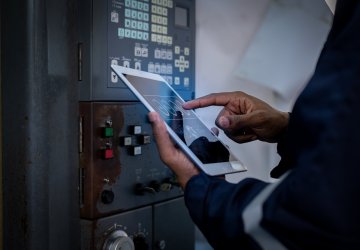The pitfalls of reactive and time-based maintenance
Efficient asset maintenance is crucial for controlling costs and maintaining productivity in a business environment. Traditional methods like Excel-based schedules or reactive strategies can often result in unnecessary expenses and downtime. This blog explores how a Computerised Maintenance Management System (CMMS) can enhance your maintenance approach, shifting towards just-in-time maintenance for better cost management.
Reactive maintenance work, typically triggered by asset failures or maintenance backlogs, is both expensive and inconvenient due to its unplanned nature. This type of maintenance demands immediate action and isn’t typically budgeted.
On the other hand, time-based maintenance allows maintenance experts to plan and execute maintenance activities based on warranties, qualitative requirements, or compliancy and legislation. This type of time-based maintenance reduces reactive maintenance work drastically, and reduces related costs.
However, despite being planned, more than 40% of time-based maintenance is still not executed at the right time, and instead is either too early or too late. Maintenance performed too late causes expensive reactive work, while maintenance performed too early is a waste of investment and time.
CMMS Enables Just-In-Time and Objective-Based Maintenance
A CMMS ensures timely and objective-based maintenance by assessing asset conditions and aligning maintenance activities with business goals. Once the condition of an asset is assessed and scored, the CMMS automatically calculates and schedules the required maintenance. Extensive maintenance libraries of activities, deterioration curves, and cost catalogues feed the CMMS software with data and intelligence to ensure just-in-time maintenance execution.
The ultimate just-in-time maintenance strategy is supported with real time tracking of actual asset statuses and data. Intelligent buildings and smart assets are connected to your IT network and send data about production hours, failure statuses, production numbers, and energy consumption in real time to your CMMS. Based on preset thresholds and historical information, the CMMS can then accurately forecast relevant maintenance jobs and their costs.
Combining CMMS with IWMS for increased maintenance efficiency
When combining your CMMS functionality with an Integrated Workplace Management System (IWMS), you can analyse your maintenance data in relation to other aspects of your business, such as your real estate strategy, space occupancy data, user behaviour, and sustainability goals. This truly holistic view can further help you avoid unnecessary maintenance.
For example: why maintain a building that will be demolished? Why not reduce maintenance effort by combining energy measures with preventative or condition-based maintenance? This holistic and integrated view of maintenance is the key to success for cost efficiency, business continuity, and a sustainable maintenance strategy.
Learn about the benefits real Planon customers have experienced from using Planon’s CMMS solution
'The [Planon] solution allowed us to reduce our maintenance backlog by 50% within three months.'
Elizabeth Harris,
Business Information Systems Manager, King's College London
Read story
Curious how a CMMS can benefit your business? Learn more about Planon’s CMMS or request a personalised demo today.

